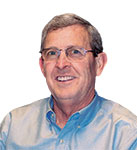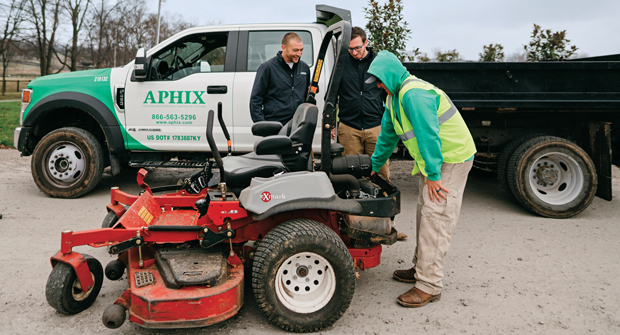After a few years of what he calls “sluggish” growth, partially due to $30 million worth of damage done to the company’s properties from Imprelis herbicide, Ryan and his team are refocusing on sales.
Your company is focusing on growth by enlisting all employees in the company to help find business. Tell me where the idea came from to get everybody involved.
We have 200 people that are a team. If we focus on the right thing, we do it, and I don’t think we’ve been focusing on growth.
We’re an ESOP—an Employee Stock Ownership Plan—so we tell our people, “You don’t want to own stock in something that’s not growing.” Really, our story is that we have to have everybody engaged on growth.
We hit a wall the last couple of years. We’re refocusing the program. Some people got the attitude that we’re probably too big now or if we’re going to win a customer, we’re going to lose a customer. The initiative is to say, “Guys, that’s an attitude. There are a lot of people out there who still want what we offer, so be bold and tell them.”
One of the issues when you hire nice people is that they think they can’t go up and ask somebody for business, that it’s too much in somebody’s face. We’re getting our staff back to being bold and telling them, “Hey, we’ve got a good thing, we’re unique in the industry and we would love for you to take a look at what we have.” We’ve gotten away from that the last few years. We’re seeing growth come back this year, so we’re pleased.
Did you have training or an event to launch this idea?
We talk about it. There’s a saying that you get what you focus on, and it is our focus.
Do you offer any incentive for finding new business?
We have little incentive programs built in throughout the company, but the big incentive is the employees own the company.
We focus on allowing everybody to win, and then they know that for them to keep winning—and we talk about this when we have our monthly meeting—they have to keep reaching out and selling. In most areas of our company, we don’t have a dedicated sales force that grows the company. Our people do their own sales. Turf managers manage their routes, and they grow them.
Can this idea work at a non-ESOP company?
Oh, I think so. People have to very clearly know what they’re getting paid to do, don’t they? In a non-ESOP company, it could be as simple as, “Folks, I’m going to pay you to get the work done, and I’m going to pay you to grow.”
I think you can do it through a simple bonus system. The big issue there is that growth really needs to be in dollars versus customers, because there are too many games you can play. We’ve seen it happen a little bit in our company where people wouldn’t cancel off a customer who was doing no services because they were getting rewarded on growing customers.
Dollars accomplished at the end of the year is the only real telltale thing. It has to be in dollars accomplished.
You were up 4 percent over 2014. What’s your goal for 2016?
We would like to be up 10 percent at the end of the year. Our goal is to grow 10 percent every year through 2030, and it will be very difficult to do that, but that’s our corporate goal. When you’re at $200,000, growing $20,000 isn’t too hard, but at $27 million, 10 percent is $2.7 million. That’s taxing. We have to rethink everything we do.
 Larry Ryan
Larry Ryan
President
Ryan Lawn & Tree, Overland Park, Kan.

